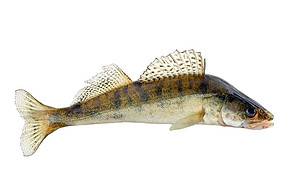Virginia is a beautiful state filled with plenty of opportunities to enjoy outdoor activities, including fishing. Interestingly, the state of Virginia is home to only two natural lakes, although there are plenty of man-made lakes and reservoirs. Within these freshwater bodies of water, you can find catfish, bass, crappie, sunfish, walleye, and trout. Also in Virginia are bowfin fish. The state record was caught in 1964 and 2004, can you guess their sizes? Continue reading to discover the largest bowfin ever caught in Virginia and other amazing state records!
What is the Largest Bowfin Ever Caught in Virginia?
There are two records recorded as the largest bowfin ever caught in Virginia. The first record was caught before using the new State Record Fish Rules adopted in 1985 and is the largest of the two. On November 14, 1964, E. C. Cutright caught a 17-pound and 8-ounce bowfin in Chickahominy Lake. Nearly forty years later on October 17, 2004, angler John Plyler, Jr. caught a 16-pound and 8-ounce bowfin in Lake Cahoon. These are both close to the world record bowfin, which was 21 pounds and 8 ounces. Robert Harmon reeled in this impressive fish in 1980 and has held the record since.
Interestingly, Virginia also has a record for the largest bowfin ever caught by archery. In 2016, Patrick Pendergrass used his impressive archery skills to catch a 10-pound and 12-ounce bowfin.
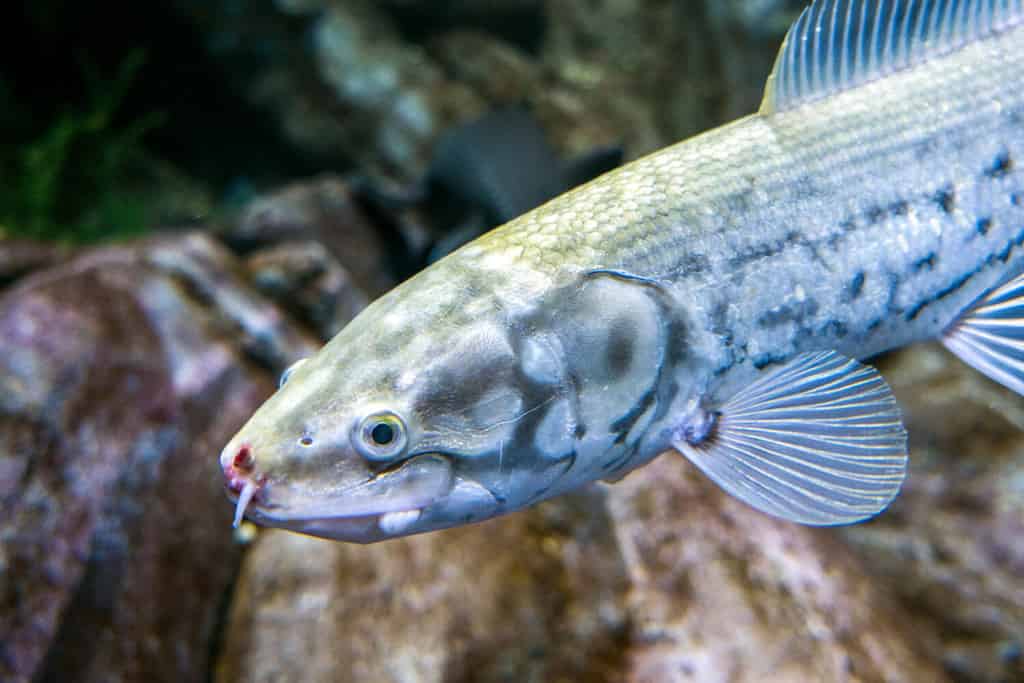
On November 14, 1964, E. C. Cutright caught the largest bowfin in Virginia. It was 17 pounds and 8 ounces.
©Miroslav Halama/Shutterstock.com
About Bowfin
Now that we know the state records for bowfin in Virginia, we can learn more about these old and primitive fish. Bowfin have primitive roots back 70 million years ago. They are similar to their ancestors. In Virginia, some of the best lakes to fish for bowfin include Chickahominy Lake, Little Creek Reservoir, and Diascund Creek Reservoir.
Appearance and Size
So, what do bowfin fish look like? Bowfins are easy to identify from their unique appearance. They have long dorsal fins and mottled green and brown bodies. Bowfins also have many strong conical teeth. The coloration may vary. Some bowfins are generally lighter than others.
The average size of a bowfin is 18 to 24 inches, rarely do they surpass 2 feet long. Although bowfins more commonly weigh 1 to 5 pounds, they can reach up to 19 pounds.
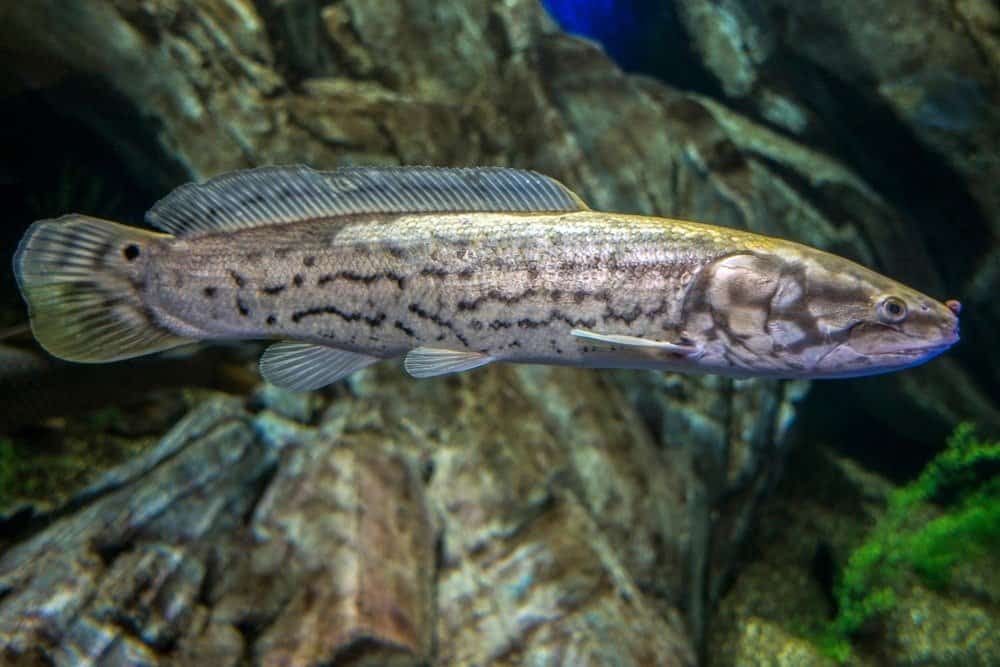
Bowfin fish may weigh up to 19 pounds.
©Miroslav Halama/Shutterstock.com
Distribution and Habitat
The bowfin fish has a wide distribution. They are native to portions of eastern North America including the St. Lawrence-Great Lakes and the Mississippi River Basin drainages. They’ve also been introduced to other parts of the United States. Bowfins live in lowland rivers and lakes, swamps, and brackish water. You can spot them in vegetated bodies of water where they use the vegetation as cover. They are common in slow-moving lakes and rivers, which helps them stay hidden from predators. Bowfins seek shelter from predators under logs and submerged plants. Anglers can find them in warm, poorly oxygenated waters.
Diet
Bowfins aren’t picky eaters, although their specific diet changes as they grow and age. Generally, bowfin fish eat frogs, salamanders, crayfish, small fish, aquatic insects, and mollusks. Young bowfins under 4 inches long eat insects and other microscopic animals. These hunters are opportunistic feeders and will eat anything they can fit in their mouths. They use the vegetation to sneak up on their prey. Anglers sometimes use live prey like minnows, frogs, or salamanders to catch bowfins.
Predators
The smaller and younger a bowfin, the easier prey they are to larger fish, mammals, and fish-eating birds. Bowfins though have few natural predators as adults. The biggest predators of a bowfin are humans and American alligators. However, juvenile bowfin are sometimes gobbled up by other larger fish like catfish. Larger bowfins may also eat younger and smaller bowfins. To protect themselves, bowfins camouflage and hide.
Other Fish in Virginia
The state of Virginia is home to many different fish species and incredible state records, apart from bowfin fish. One of the largest fish in Virginia is the flathead catfish. Jeffrey E. Dill reeled in an almost 70-pound flathead in Lake Smith on May 25, 2018. Although massive, the largest fish ever caught in Virginia is over double this size! Interestingly, Virginia is also missing some records. As of October 2023, no qualifying bluegill sunfish or white crappie have been caught. For a bluegill sunfish to qualify, it needs to weigh at least 2 pounds and white crappie needs to weigh 3 pounds.
Black Crappie
One fish you can find in Virginia is the black crappie. This beautiful fish is a member of the Centrarchidae family. It’s native to North America, although the exact origin is a mystery. You can find black crappies in all 48 contiguous states. Black crappies aren’t entirely black either. Instead, they are silvery-grey to green with dark mottling/spots on their bodies. They may also have some blue coloration. Black crappies are long, flat, and have seven or eight spines on their dorsal fins. They aren’t very big and typically reach between 4 to 8 inches long. The largest black crappie ever caught was 19.3 inches long and nearly 5 pounds.
So, how does Virginia’s state record compare to the world record? Currently, Virginia displays two records. The largest black crappie ever caught was 4 pounds and 14 ounces. E. L. Blackstock caught this monster of a fish in 1967 in Lake Conner. Justin Elliott holds the other record. He caught a 4-pound and 10-ounce black crappie in a private pond on April 24, 1994.
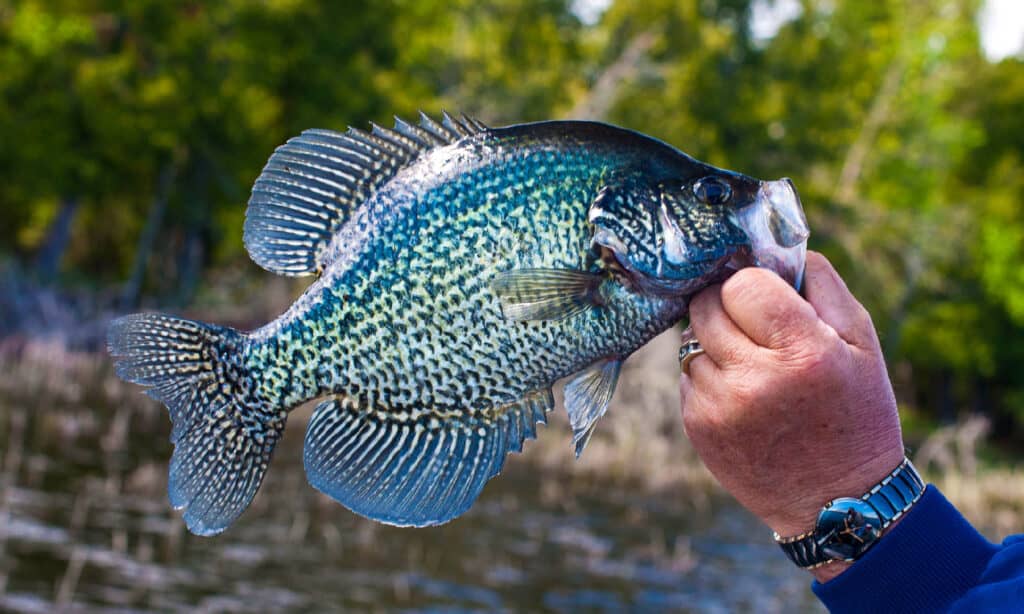
The largest black crappie ever caught in Virginia was almost 5 pounds.
©iStock.com/SteveOehlenschlager
Blue Catfish
The next fish species on our list, the blue catfish, is also the largest fish record in the state. Blue catfish are massive! These blue-grey fish can measure anywhere from 24 to 46 inches long, or in rare cases, longer. Blue catfish have a wide range. Their native distribution is mainly in the Mississippi River and Louisiana drainage systems. However, you can find these fish throughout North America. Because of their sheer size, they can do a lot of damage as an invasive species. They are an invasive species in the Chesapeake Bay.
Virginia’s largest fish is also a world record! In 2011, Richard “Nick” Anderson a 143-pound blue catfish in Kerr Lake on the border of Virginia and North Carolina. It was 57 inches long with a girth of 44 inches.

Virginia holds the record for the largest blue catfish ever caught in the world. It weighed an astonishing 143 pounds.
©Thomsonmg2000, cropped and adjusted by Kostka Martin / CC0 – License
Largemouth Bass
Largemouth bass have to be one of the most popular fish species in the United States. They are popular gamefish throughout the country and are regularly stocked in some man-made lakes. Largemouth bass are challenging and put up a fight when getting reeled in, which makes them enticing for anglers. These thick fish are members of the Centrarchidae family. Their native range is the eastern and central United States, southeastern Canada, and northern Mexico. On average, largemouth bass are 11 to 20 inches long and weigh 1 to 5 pounds. The unofficial largest largemouth bass weighed 25 pounds.
Although not as heavy as 25 pounds, the largemouth bass Virginia record is still incredible. On May 20, 1985, Richard Tate caught a 16-pound and 4-ounce largemouth bass in Connor Lake.
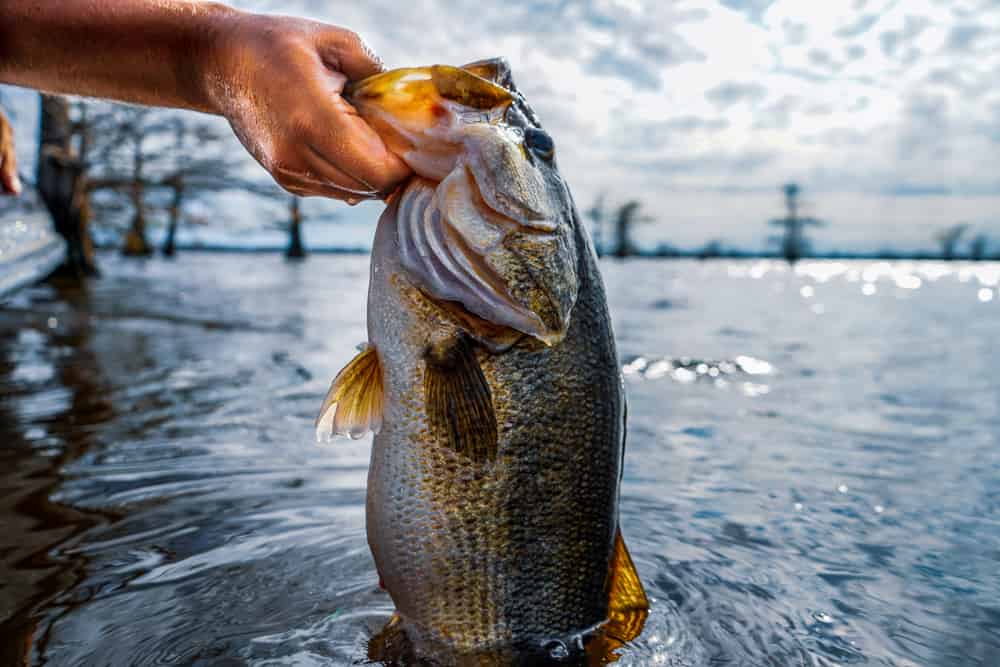
Largemouth bass may weigh up to 25 pounds.
©Maclane Parker/Shutterstock.com
Lake Trout
The last fishing record on our list is the lake trout. Lake trout are common in cool lakes in northern North America. They go by many names and are members of the Salmonidae family. Lake trout have been widely introduced to other parts of North America and the world. They can be found in some areas of Europe. Lake trout vary a bit in appearance but are generally grey, brown, and white with scattered spots. The average length of a lake trout is 2 to 3 feet and they can weigh as much as 72 pounds.
The largest lake trout ever caught in Virginia is nowhere near as big as the IGFA world record. On July 6, 1966, angler Arthur A. Conner caught a 5-pound and 6-ounce lake trout in the Philpott Reservoir. No one has beaten his record in nearly 60 years.
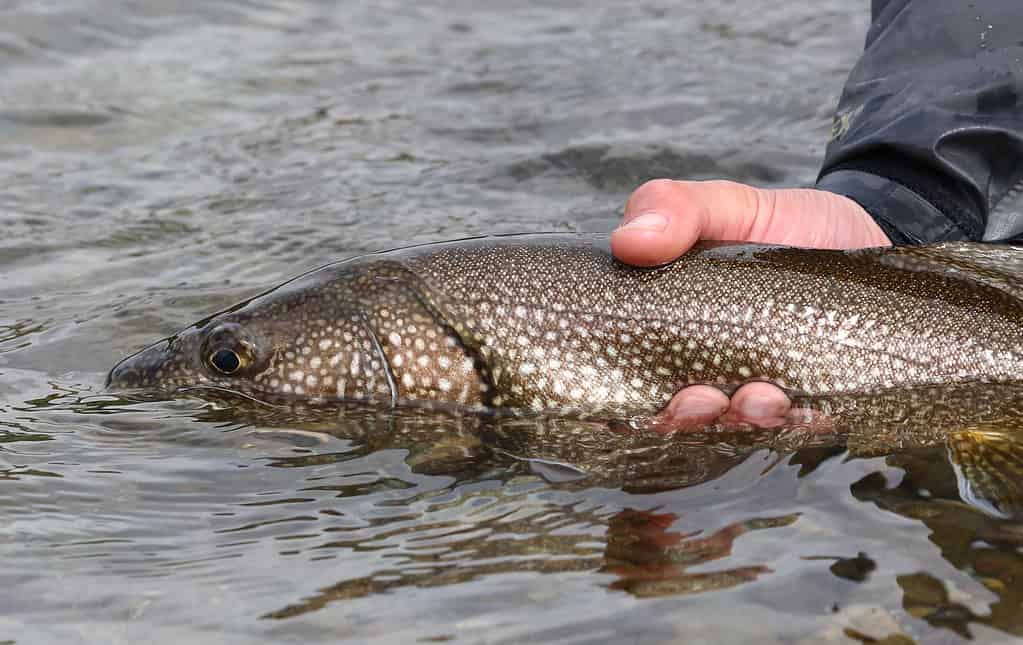
The largest lake trout ever caught weighed 72 pounds.
©Iryna Harry/Shutterstock.com
The photo featured at the top of this post is © IrinaK/Shutterstock.com
Thank you for reading! Have some feedback for us? Contact the AZ Animals editorial team.




